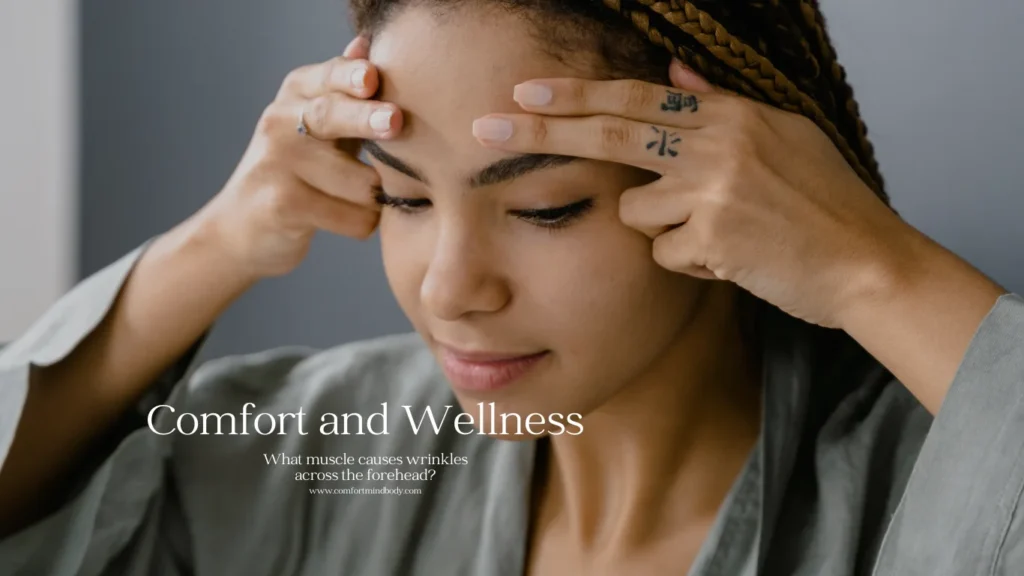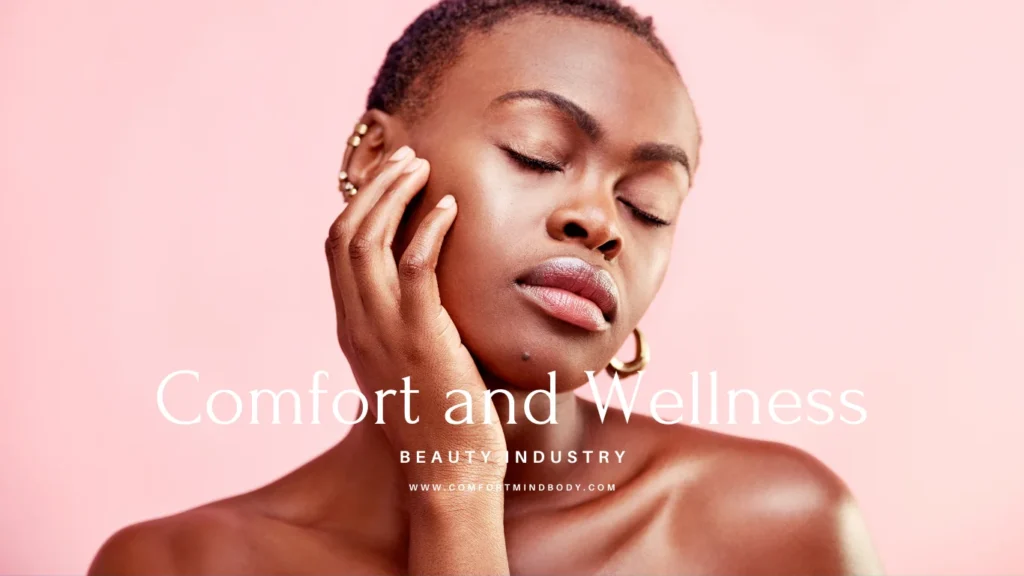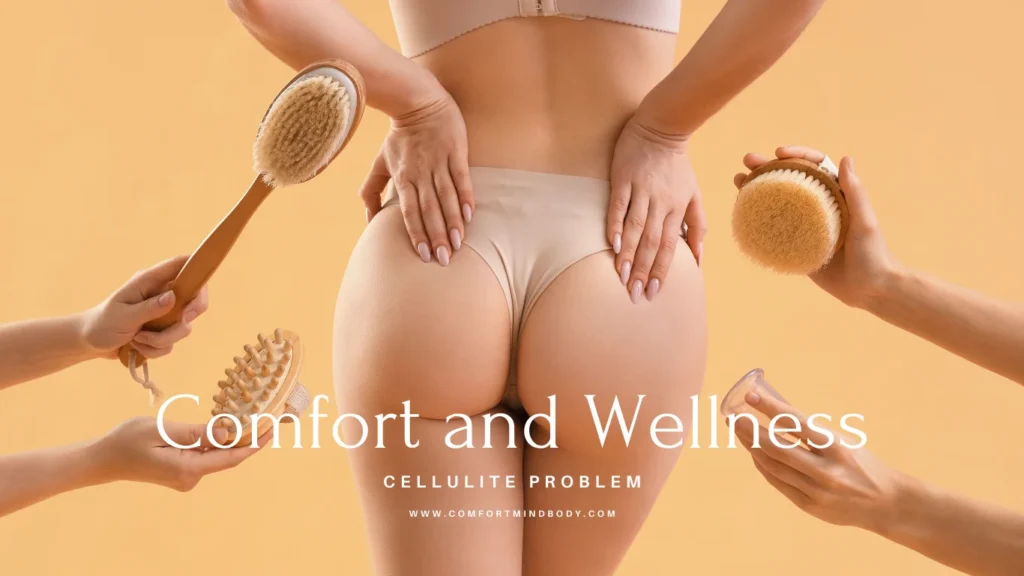Table of Contents
ToggleIntroduction:
Forehead wrinkles. They’re a common sign of aging that many of us dread. But have you ever wondered what causes these lines to form across your forehead? The answer lies in the muscles beneath your skin. What Muscle Causes Wrinkles Across The Forehead?
In this article, we’ll delve into the anatomy of the forehead. We’ll explore the specific muscle responsible for causing these wrinkles. But that’s not all.
We’ll also discuss Botox, a popular treatment option for forehead wrinkles. We’ll provide before and after perspectives for those considering this cosmetic procedure. We aim to inform and educate.
Whether you’re concerned about the appearance of forehead wrinkles, considering Botox, or simply curious about the physiology of facial expressions, this article is for you.
Join us as we unravel the mystery behind forehead wrinkles. Let’s begin.
Understanding Forehead Wrinkles: An Overview
Forehead wrinkles are lines or creases that form on the forehead. They’re a natural part of aging. But they can also be influenced by other factors. Repetitive facial expressions, for instance, can lead to wrinkles.
When we raise our eyebrows or frown, the muscles in our forehead contract. Over time, this repeated muscle movement can cause wrinkles to form. But which muscle is primarily responsible for these wrinkles? To answer that, we need to delve into the anatomy of the forehead.
The Anatomy of the Forehead and Facial Expressions
What muscle causes wrinkles across the forehead?
The forehead is a complex structure. It’s made up of skin, fat, and muscles. One of these muscles, the frontalis, plays a key role in facial expressions. It’s the muscle that allows us to raise our eyebrows.
When we’re surprised, worried, or concentrating, the frontalis muscle contracts. This contraction pulls the skin of the forehead upward. Over time, this repeated movement can lead to the formation of horizontal lines across the forehead.
These are the wrinkles we often associate with aging. But the frontalis muscle isn’t the only muscle involved in facial expressions. Other muscles, like the corrugator supercilii and the procerus, also play a role.
These muscles are responsible for frowning and squinting. However, when it comes to forehead wrinkles, the frontalis muscle is the main culprit.
The Frontalis Muscle: Culprit Behind Forehead Wrinkles
The frontalis muscle is a large, thin muscle. It spans the forehead from the hairline to the eyebrows. When this muscle contracts, it raises the eyebrows and wrinkles the forehead. This is why the frontalis muscle is often referred to as the “worry muscle”.
But why does this muscle contraction lead to wrinkles? The answer lies in our skin. As we age, our skin loses elasticity. This is due to a decrease in collagen and elastin, two proteins that keep our skin firm and flexible.
When the frontalis muscle contracts, it causes the skin to fold. Over time, these folds can become permanent, forming wrinkles. But it’s not all bad news.
Understanding the role of the frontalis muscle in wrinkle formation can help us find effective treatments. One such treatment is Botox, which we’ll discuss in the next section.
The Science of Aging:
What muscle causes wrinkles across the forehead?
Aging is a complex process. It involves many factors, both internal and external. One of the most visible signs of aging is the appearance of wrinkles. But why do we get wrinkles as we age?
The answer lies in the changes that occur in our skin over time. As we age, our skin loses its elasticity. This is due to a decrease in the production of collagen and elastin.
These two proteins are essential for maintaining the firmness and flexibility of our skin. When the levels of these proteins decrease, our skin becomes less able to bounce back from the folding caused by facial expressions.
This leads to the formation of permanent lines or wrinkles. Forehead wrinkles, in particular, are often the result of repeated contraction of the frontalis muscle.
But while aging is a major factor, it’s not the only one that contributes to the formation of forehead wrinkles.
Genetics and Forehead Wrinkles
Genetics also plays a role in the development of forehead wrinkles. Some people are genetically predisposed to develop wrinkles at a younger age. This is often due to the structure of their skin and the way it ages.
For instance, people with fair skin often develop wrinkles earlier than those with darker skin. This is because fair skin is less able to protect itself from sun damage, which can accelerate the aging process.
Genetics can also influence the strength and activity of the frontalis muscle. People with a more active frontalis muscle may develop forehead wrinkles earlier due to the repeated contraction of this muscle.
While we can’t change our genetics, understanding their role can help us take steps to delay the onset of wrinkles.
Environmental Factors and Lifestyle Influences
What muscle causes wrinkles across the forehead?
Environmental factors and lifestyle choices can also influence the development of forehead wrinkles. Sun exposure, for instance, is a major contributor to skin aging.
The ultraviolet (UV) rays from the sun can damage the skin, leading to a breakdown of collagen and elastin. This can accelerate the formation of wrinkles.
Smoking is another factor that can contribute to premature aging. It reduces blood flow to the skin, depriving it of oxygen and nutrients. This can lead to a loss of elasticity and the formation of wrinkles.
Dehydration can also lead to wrinkles. When our skin is dehydrated, it loses its plumpness and lines become more visible. Other factors that can contribute to the formation of forehead wrinkles include:
- Poor diet
- Lack of sleep
- High-stress levels
- Excessive alcohol consumption
By understanding these factors, we can make lifestyle changes to help prevent or delay the onset of forehead wrinkles.
Botox: A Popular Solution for Forehead Wrinkles
What muscle causes wrinkles across the forehead?
When it comes to treating forehead wrinkles, Botox is a popular choice. Botox is a brand name for a type of neurotoxin produced by the bacterium Clostridium botulinum. It’s used in small, controlled doses to relax the muscles that cause wrinkles.
Botox is a minimally invasive procedure. It involves injecting the neurotoxin directly into the frontalis muscle. This temporarily paralyzes the muscle, reducing its activity.
As a result, the skin on the forehead smooths out, reducing the appearance of wrinkles. The effects of Botox are temporary. They typically last between three to six months.
How Botox Works to Smooth Out Wrinkles
Botox works by blocking the signals from the nerves to the muscles. When the frontalis muscle receives the Botox injection, it can no longer contract. This causes the wrinkles on the forehead to relax and soften.
Botox specifically targets the muscles responsible for wrinkles caused by facial expressions. This makes it particularly effective for treating dynamic wrinkles, such as those on the forehead.
However, Botox is less effective for static wrinkles, which are present even when the face is at rest. It’s important to note that Botox doesn’t immediately smooth out wrinkles.
It can take up to a week for the full effects to be visible. Also, the results of Botox can vary from person to person. Factors such as skin type, age, and lifestyle can influence the effectiveness of the treatment.
Botox for Forehead Wrinkles Before and After: What to Expect
Before undergoing Botox treatment, it’s important to have realistic expectations. While Botox can significantly reduce the appearance of forehead wrinkles, it won’t eliminate them. The results of Botox are temporary.
To maintain the smooth appearance of the forehead, regular treatments are necessary. The frequency of treatments will depend on how quickly your body metabolizes the Botox. Most people require treatments every three to six months.
It’s also important to be aware of the potential side effects of Botox. These can include bruising, swelling, and discomfort at the injection site. In rare cases, Botox can cause more serious side effects, such as difficulty swallowing or breathing.
The Procedure: Preparing for Botox and What Happens During Treatment
Before undergoing Botox treatment, a consultation with a qualified healthcare professional is necessary. During the consultation, the professional will assess your skin and discuss your treatment goals.
They will also explain the procedure, potential side effects, and aftercare instructions. On the day of the treatment, the professional will clean the area to be treated. They will then inject the Botox into the frontalis muscle using a fine needle. The procedure usually takes about 10 to 15 minutes.
After the procedure, you can return to your normal activities. However, you should avoid rubbing or massaging the treated area for 24 hours. This can cause Botox to spread to other areas.
Aftercare and Maintaining Results: Post-Botox Tips
What muscle causes wrinkles across the forehead?
After Botox treatment, it’s important to follow the aftercare instructions provided by your healthcare professional. This can help to maximize the results and minimize potential side effects.
Avoid strenuous exercise for 24 hours after the procedure. Also, avoid lying down or bending over for a few hours. This can prevent the Botox from spreading to other areas.
To maintain the results of Botox, regular treatments are necessary. It’s also important to take care of your skin. This includes using sunscreen, moisturizing regularly, and avoiding smoking and excessive alcohol consumption.
By following these tips, you can help prolong the effects of Botox and keep your forehead looking smooth and youthful.
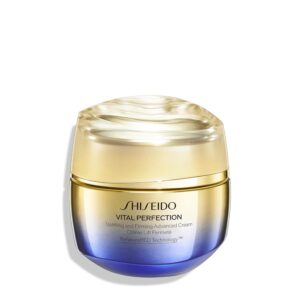
Shiseido Vital Perfection Uplifting and Firming Advanced Cream
Highly effective daily moisturizer delivers multiple age-defying benefits, helping to improve firmness, sagging, dark spots, uneven skin tone & deep wrinkles. 90% saw firmer, lifted, and more even-toned skin in 2 weeks.
Alternatives to Botox for Forehead Wrinkles
What muscle causes wrinkles across the forehead?
While Botox is a popular treatment for forehead wrinkles, it’s not the only option. Several alternatives can also help to reduce the appearance of these wrinkles.
These include topical treatments, lifestyle changes, and other cosmetic procedures. Each of these alternatives has its own set of benefits and drawbacks.
It’s important to consider these factors when deciding on the best treatment for your forehead wrinkles. Here are some alternatives to Botox for treating forehead wrinkles:
- Topical treatments and skincare regimens
- Lifestyle changes and natural remedies
- Advanced cosmetic procedures
Topical Treatments and Skincare Regimens
What muscle causes wrinkles across the forehead?
Topical treatments can be a good alternative to Botox for those who prefer a non-invasive approach. These treatments include creams, serums, and lotions that contain anti-aging ingredients.
Retinoids, for example, are a type of vitamin A that can help to reduce the appearance of wrinkles. They work by promoting cell turnover and boosting collagen production.
Hyaluronic acid is another ingredient that can help to smooth out wrinkles. It’s a natural substance that attracts and retains moisture in the skin.
By hydrating the skin, hyaluronic acid can help to plump up wrinkles and fine lines. Peptides are another ingredient that can help to reduce wrinkles. They work by signaling the skin to produce more collagen.
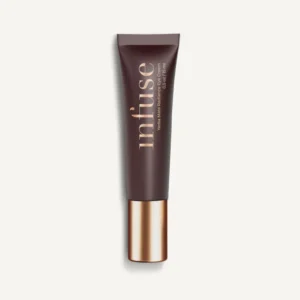
Yerba Mate Radiance Eye Cream
Yerba mate is more than just a morning caffeine fix. It’s a natural source of antioxidants and helps reduce signs of aging, prevents fine lines and wrinkles, and boosts circulation in the delicate skin around your eyes to minimize dark circles and puffiness and its great for mature skin care.
Lifestyle Changes and Natural Remedies
What muscle causes wrinkles across the forehead?
Lifestyle changes can also help reduce the appearance of forehead wrinkles. This includes maintaining a healthy diet, staying hydrated, and getting enough sleep. Regular exercise can also help improve skin health.
It increases blood flow, which can help to nourish skin cells and keep them vital. Avoiding sun exposure is another important lifestyle change. The sun’s UV rays can damage the skin and accelerate the aging process.
When you do go out in the sun, be sure to wear sunscreen to protect your skin. Natural remedies, such as facial exercises and massage, can also help reduce wrinkles.
Recommended Collagen Peptides Products:

Viva Naturals: Bovine Collagen
Introducing our Pure Hydrolyzed Collagen Peptides, sourced from grass-fed, pasture-raised bovine hide. Made with amino acids (the building blocks of protein), it can help keep your skin firm and hydrated and support your healthy hair, nails, joints, and bones.
- Types I & III
- 20 g of Collagen Peptides per serving
- Hydrolyzed for Easier Absorption
- Dissolves Quickly and Easily
- Unflavored and Virtually Tasteless
Advanced Cosmetic Procedures Beyond Botox
What muscle causes wrinkles across the forehead?
For those who are looking for more dramatic results, there are advanced cosmetic procedures available. These include dermal fillers, laser treatments, and chemical peels.
Dermal fillers, like Juvederm and Restylane, work by adding volume to the skin. This can help to smooth out wrinkles and give the skin a more youthful appearance.
Laser treatments, such as Fraxel and CO2 lasers, work by removing the outer layer of skin. This stimulates the production of new skin cells and collagen.
Chemical peels work similarly. They use a chemical solution to exfoliate the skin and stimulate new cell growth. These procedures can provide more dramatic results than Botox, but they also come with a higher risk of side effects.
It’s important to consult with a qualified healthcare professional before undergoing any of these treatments.
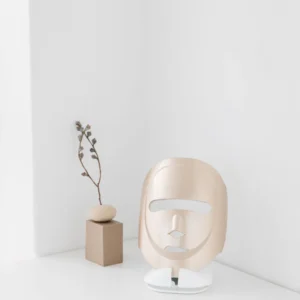
ECO FACE PLATINUM LED MASK
- Technology: 120 LED lights for full face coverage (60 red + 60 near-infrared).
- Easy to Operate: Lightweight, portable, one-button control.
- Recommended Usage: 10 minutes per day, 3-4 times per week.
- Maximum Usage: 20 minutes daily.
- Sustainability: Rechargeable, no single-use components.
The Psychological Impact of Forehead Wrinkles and Cosmetic Treatments
What muscle causes wrinkles across the forehead?
Forehead wrinkles, like other signs of aging, can have a significant psychological impact. They can affect how we perceive ourselves and how we believe others perceive us.
For some, forehead wrinkles can lead to feelings of insecurity or decreased self-esteem. This is often due to societal perceptions of aging and beauty.
On the other hand, treating forehead wrinkles can have positive psychological effects. It can boost confidence and improve self-image.
Societal Perceptions of Aging and Wrinkles
In many societies, youthfulness is highly valued. This can lead to negative perceptions of aging and wrinkles. Forehead wrinkles, in particular, are often associated with aging.
They can be seen as a sign of stress, fatigue, or worry. This societal pressure can make individuals feel self-conscious about their forehead wrinkles.
It can also lead to a desire to seek treatments to reduce their appearance.
The Emotional Benefits of Treating Forehead Wrinkles
Treating forehead wrinkles can have emotional benefits. For many, reducing the appearance of wrinkles can lead to increased confidence. It can also improve self-image and overall satisfaction with one’s appearance.
This can have a positive impact on mental well-being. However, it’s important to have realistic expectations about the results of treatments.
Ultimately, the decision to treat forehead wrinkles should be based on personal comfort and satisfaction, rather than societal pressures.
Choosing the Right Treatment: Factors to Consider
What muscle causes wrinkles across the forehead?
When it comes to treating forehead wrinkles, there are several factors to consider. Firstly, it’s important to understand the cause of your wrinkles. Are they due to aging, repetitive facial expressions, or other factors? Understanding the cause can help you choose the most effective treatment.
Secondly, consider your personal preferences and comfort level. Are you comfortable with invasive procedures like Botox, or do you prefer non-invasive treatments? Lastly, consider your budget and the cost of the treatment.
Botox and other invasive procedures can be costly, especially since they often require repeat treatments.
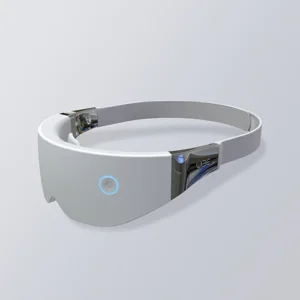
EYE CARE SOLUTION LED MASK
- Skip the Eye Cream
Expensive eye creams have limited results because they only coat the surface of your skin. Go beyond to your dermal skin layer with precision-targeted 830nm and 630 nm red light LEDs. - Instant Relief
Need immediate results? Turn on the advanced heating pads to encourage blood circulation for the ultimate spa glow. - Rechargeable and Portable
No batteries to replace. Recharge with USB-C cable. Wireless to go anywhere.
Consulting with Professionals: Finding a Qualified Practitioner
Before undergoing any treatment for forehead wrinkles, it’s crucial to consult with a qualified professional. This could be a dermatologist, a plastic surgeon, or a certified aesthetician.
These professionals can provide valuable advice based on their expertise and experience. They can assess your skin type, the severity of your wrinkles, and your overall health.
This information can help them recommend the most suitable treatment for you. Remember, the success of any treatment largely depends on the skill and expertise of the practitioner.
Cost, Safety, and Efficacy: Weighing Your Options
When choosing a treatment for forehead wrinkles, cost, safety, and efficacy are important factors to consider. Botox, for instance, is known for its efficacy in reducing wrinkles.
However, it can be costly, and there are potential side effects to consider. On the other hand, topical treatments may be safer and more affordable.
However, their efficacy in reducing deep wrinkles may be limited. It’s important to weigh these factors and make an informed decision. Remember, the goal is not just to reduce wrinkles, but to do so safely and sustainably.
Conclusion:
What muscle causes wrinkles across the forehead?
Choosing a treatment for forehead wrinkles is a personal decision. It’s about finding a balance between your desire for smoother skin and your comfort level with different treatments.
Remember, there’s no one-size-fits-all solution. What works for one person may not work for another. It’s important to do your research, consult with professionals, and weigh your options carefully.
Consider not just the cost, but also the safety and efficacy of the treatment. At the end of the day, the goal is to feel confident and comfortable in your skin. Whether you choose Botox, topical treatments, or lifestyle changes, embrace your decision with confidence.
Remember, aging is a natural process, and wrinkles are a normal part of that process. The decision to treat wrinkles is not about stopping the aging process, but about aging gracefully and comfortably.
So, whatever decision you make, make it for yourself, and embrace it with confidence. After all, confidence is the most beautiful thing you can wear.
Affiliate Disclosure:
The links contained in this product review may result in a small commission. This goes towards supporting our research and editorial team and please know we only recommend high-quality products.
Note: This article is for informational purposes only and is not intended to diagnose, treat, or cure any disease. Always consult a healthcare professional before taking any supplement or making any changes to your diet or lifestyle.
